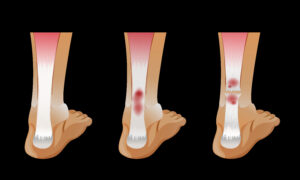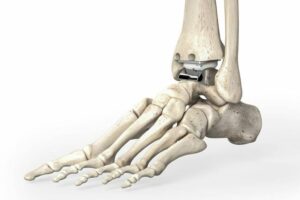Ankle Prosthesis Surgery

By: Assoc. Dr. ancestor
Ankle Prosthesis Surgery
In cases where the ankle joint is severely damaged ankle replacement surgery makes. It is performed to treat symptoms caused by rheumatoid arthritis in the joint. The surgery is usually performed by an orthopedic surgeon. Local or general anesthesia is applied to the patient's legs.
During the operation, the damaged area of the ankle joint is removed and an artificial prosthesis is inserted. The prosthesis is attached to the ends of the combined tibial and fibular bones with screws. After the operation, the use of crutches and physiotherapy is required for a few weeks. Pain, swelling, and redness are normal during this time and are usually managed with painkillers and ice application.
Complications After Ankle Prosthesis Surgery

These clots can lead to serious health problems such as deep vein thrombosis or pulmonary embolism. Damage to nerves may occur during or after surgery. This may cause numbness or loss of movement in the ankle. During the placement of the prosthesis, there may be compression in the joint or tissue hardening around the prosthesis.
This may cause limitation of movement. After the prosthesis is placed, the prosthesis may move or come off over time. This situation may require additional surgical intervention. Allergic reactions to prosthesis materials may occur and cause skin irritation or redness. Complications occur due to the anesthesia methods used, such as general anesthesia. In some patients, the healing process may take longer than expected. Physical therapy may be required. Ankle replacement surgery Learn more about risks before or after. For this reason, it is important to meet with the doctor who will perform the treatment.
Walking Process After Ankle Prosthesis Surgery

Your physiotherapist will show you the appropriate exercises. It may not be possible to walk as soon as the prosthesis is worn. Therefore, your physical therapist will provide you with a walking device (for example, a walker) that supports your ankle prosthesis. As the walking distance gradually increases, you can abandon the walker and start walking only with the prosthesis. Ankle replacement surgery post-When you start walking, it is important to strengthen your muscles.
Your physiotherapist will show you the appropriate exercises. These exercises help strengthen the prosthesis and surrounding muscles. Walking technique is very important in the use of the prosthesis. Your physiotherapist will teach you proper walking technique. This will allow for more efficient walking using the prosthesis correctly. It is important to continue regular physiotherapy during the post-operative period. Your physiotherapist will determine the most suitable rehabilitation program for you. Usually, it takes several months to walk after surgery. Your physiotherapist will explain the post-operative process to you in more detail. He will then determine the most appropriate treatment plan for you.
Factors such as the recovery process, how successful the surgery is, lifestyle and expectations affect the level of happiness. After prosthesis surgery, patients are happy to get rid of their pain. It is also a happy experience for them to regain their physical activity and freedom of movement. After surgery, some patients may experience some limitations in their physical activity levels. On the other hand, ankle replacement surgery Afterwards, patients need physical therapy for a while. This process can sometimes be long and laborious. Therefore, the level of happiness after surgery is also related to how fast and easy the recovery process is. As a result, it seems that the patients' quality of life increases and they are happy to get rid of their pain.





